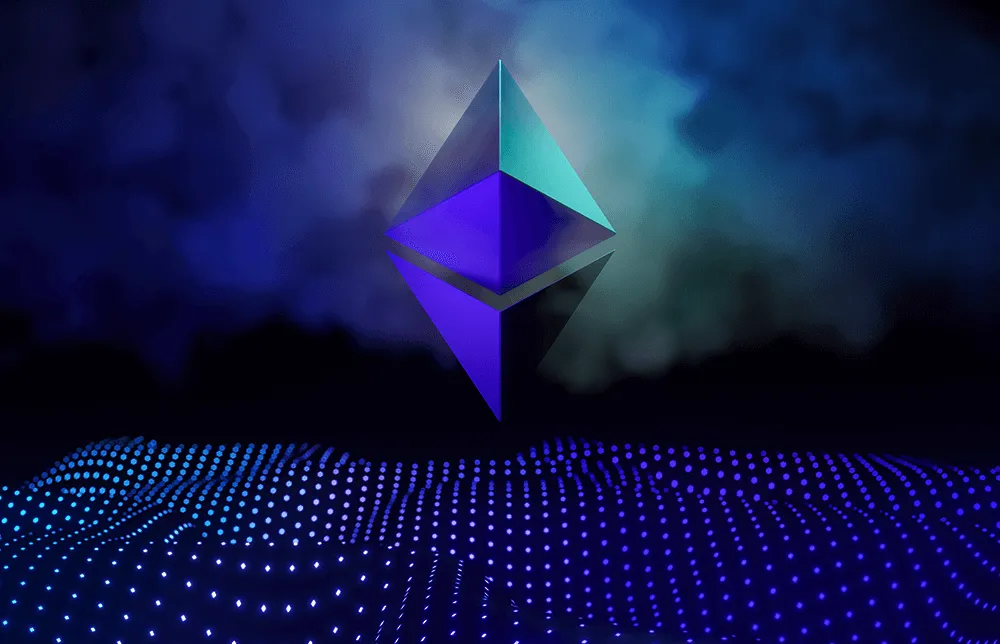Ethereum Pectra Upgrade: All You Need to Know About
Date Modified: 12/10/2025
Ethereum (ETHUSD) is undeniably one of the most popular cryptocurrencies and is often considered the second-most traded cryptocurrency, following Bitcoin (BTCUSD).
Given its significance and widespread popularity, many traders and market watchers are keen to stay updated on any developments regarding this leading crypto.
One of the most pivotal events in the cryptocurrency realm, especially for the Ethereum market, is the Ethereum Pectra upgrade (EIP), which officially went live on 7 May 2025, and here's what you need to know about it:

TL;DR
- Ethereum operates on a decentralised blockchain platform, facilitating smart contracts without a central authority.
- The Ethereum network undergoes multiple upgrades to improve its infrastructure.
- Upgrades aim to enhance scalability, security, and functionality.
- The Ethereum pectra upgrade officially went live on 7 May 2025.
- The last ETH upgrade, the Shanghai upgrade, took place in March 2023.
- Historically, Ethereum upgrades have boosted market performance, attracting traders and investors.
Simplifying Ethereum: What Is the Ethereum Network?
Introduced on 30 July 2015, the Ethereum Network represents a decentralised blockchain platform operating on peer-to-peer (P2P) technology. Its primary function involves executing smart contracts, which enable transactions without the need for central authentication.
What Are the Ethereum Upgrades and What Is a Hard Fork?
Ethereum upgrades encompass updates implemented on the blockchain network to improve scalability, security, and overall functionality. These upgrades introduce new features, developments, and optimisations to enhance the user experience.
Moreover, these upgrades are often classified as hard forks, representing significant updates to the blockchain's programming that result in substantial differences from the previous version. They serve as pivotal moments in Ethereum's evolution, marking transformative changes in its operational structure.
Overall, they enhance Ethereum's standing in the realm of cryptocurrencies and improve the user experience.
Ethereum Upgrades Throughout History (A Timeline)
Since its debut in 2015, the Ethereum network has undergone multiple changes and upgrades, with the main milestones as follows:
- Homestead (2016): This transitioned Ethereum from its initial "frontier" version, moving it from an experimental phase to a more mature and stable state, better suited for broader adoption.
- Byzantium (2017): This hard fork enhanced Ethereum's transactions, making them more suitable for businesses by improving privacy, security, and scalability.
- Istanbul (2019): This focused on improving the network's interoperability, scalability, and security through enhanced cryptographic functions and gas efficiencies.
- Muir Glacier (2020): This aimed to prevent a mechanism that could slow down Ethereum's block production, ensuring smooth network operation until future updates were ready.
- Berlin (2021): This upgraded the transaction fee system and enhanced smart contract capabilities, improving the network's efficiency and security.
- London (2021): This upgrade brought significant changes, including implementing EIP-1559 to improve transaction fees and predictability for Ethereum users. It also updated Ethereum's mining process and introduced new developer features.
- Paris (2022): Known as the Ethereum Merge, this upgrade transitioned Ethereum from a proof-of-work (PoW) to a proof-of-stake (PoS) consensus mechanism. It aimed to enhance security, efficiency, and environmental friendliness.
- Shanghai (2023): This upgrade enabled users of the Ethereum cryptocurrency network to access their staked ether (ETH) funds for the first time.

What Is the Ethereum Pectra Upgrade?
The Pectra upgrade wasone of the most highly anticipated events in Ethereum and the crypto market. This major upgrade officially took place on 7 May 2025. It promises significant improvements to the network across various aspects, particularly in functionality and efficiency.
Furthermore, Pectra merges two previously planned upgrades: Prague for the execution layer and Electra for the consensus layer (explaining its name).
Why Is the Ethereum Pectra Upgrade Important?
This upgrade is deemed important for the following reasons:
- Scalability: It enhances scalability, enabling the network to efficiently process more transactions at reduced costs, crucial for applications such as DeFi and NFTs.
- Security: Enhanced security measures strengthen smart contract execution, ensuring reliability and trust among users.
- Innovation: Streamlined developer tools stimulate innovation and broaden the spectrum of applications feasible on Ethereum.
How Do Ethereum Upgrades Affect Trading & ETH Prices?
While past performance does not guarantee future results, historically, Ethereum upgrades have tended to boost the cryptocurrency's performance. These enhancements make it more attractive to traders and investors.
However, following the Pectra upgrade on 7 May 2025, Ethereum's price did not experience a notable or immediate rise. Instead, ETH continued to lag behind Bitcoin and other major cryptocurrencies, remaining about 40% below its price from a year earlier and underperforming the broader crypto market.
Trading ETH CFDs Following the Upgrade
If Ethereum trading piques your interest and you would like to seek opportunities from ETH volatility following Pectra upgrade, you may consider Ethereum CFDs with Plus500.
CFDs enable traders to speculate on Ethereum's price movements without owning the actual Cryptocurrency. CFD trading involves leverage, which allows traders to open larger positions with less capital; however, while it can increase exposure to price movements and lead to potential returns, it can also increase the risk of possible losses.
The Next Ethereum Upgrades (Scheduled)
- Fulu
- Scheduled: End of 2025
- Focus: Continued protocol improvements and optimisations
- G Star
- Scheduled: End of 2026
- Focus: Further scalability and network enhancements
- PeerDAS
- Scheduled: 2026
- Focus: Data availability, sampling, and scaling solutions
Conclusion
All in all, the Ethereum Pectra upgrade is poised to enhance scalability, security, and functionality significantly.
With a track record of upgrades boosting performance and attracting interest from traders and investors, Ethereum continues to evolve and innovate, potentially reshaping market dynamics in the digital currency landscape.
However, only time will unveil the actual implications of this crypto event.
Other Helpful Resources
To learn more about Ethereum and ETH trading, you can explore the following free educational resources:
- "What Moves Ether's Price?" (Article)
- "What is the Difference Between Ethereum and Bitcoin?" (Article)
- "Why Trade Cryptocurrency CFDs?" (Article)
- "How to Buy, Sell and Trade Cryptocurrencies" (Article)
- "How to Trade Cryptocurrencies with Plus500" (Video and article)
FAQs
This upgrade which took place in Q1 2024 (Wednesday, 13 March) reduced fee costs on the Ethereum network. It can affect ETH prices and supply due to the fact that it aims to reduce Ethereum production.
The latest Ethereum hard-fork upgrade is called "Pectra" and will improve the Ethereum network by bringing significant improvements, notably in efficiency and functionality.
The next Ethereum upgrade, Fulu, is due to take place at the end of 2025 or the beginning of 2026.
Generally speaking, Ethereum upgrades may boost ETH prices by limiting supply and improving the network's functionality. However, it is important to note that past performance is not an indicator of future results.
Related News & Market Insights
Get more from Plus500
Expand your knowledge
Learn insights through informative videos, webinars, articles, and guides with our comprehensive Trading Academy.
Explore our +Insights
Discover what’s trending in and outside of Plus500.
Stay up-to-date
Never miss a beat with the latest News & Markets Insights on major market events.


